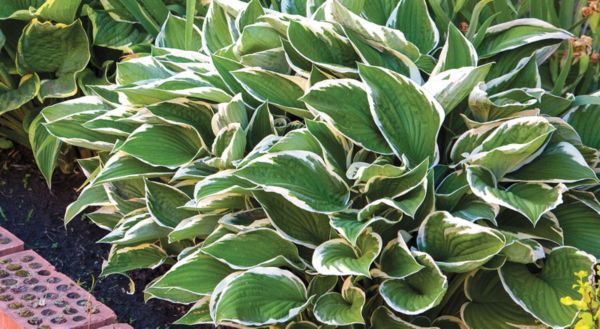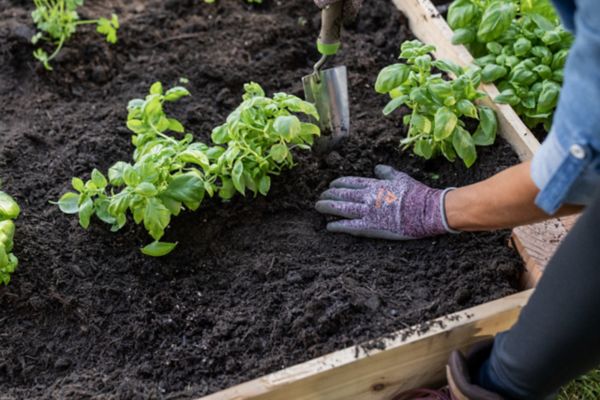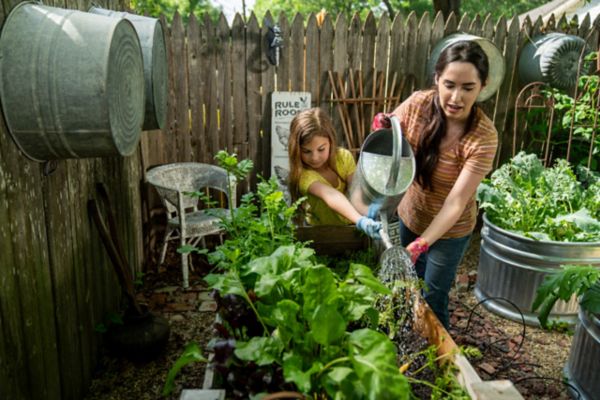How to Grow Cilantro
Authored by Leah Chester-Davis
Grown for its flat, fringed, flavorful leaves, cilantro is a versatile herb that brightens a wide range of cuisines around the world.
Cilantro is an easy-to-grow herb that deserves a place in your garden or on your patio. Grown for its flat, fringed, flavorful leaves, cilantro is a versatile herb that brightens a wide range of cuisines around the world. Among them: Mexican, Chinese, Vietnamese, Indian, Thai, Caribbean, and South American dishes. It is one of the stand-out ingredients in salsa and pico de gallo. A tomato plant or two in your garden, along with herbs such as cilantro and basil, and you have the ingredients for pleasurable eating throughout the summer.
In some areas of the world, the plant is called coriander. Cilantro produces seeds that are dried for the spice known as coriander, which is a form of the plant’s Latin or botanical name, Coriandrum sativum. That’s why some people refer to this plant as a two-for-one. It can be grown to consume both the leaves and the seeds. The seeds can be used in both the whole and ground form. They can be used in meat rubs, in soups, in pickling spices, sprinkled on roasted vegetables, or on bread.
About cilantro
| Botanical name: | Coriandrum sativum |
| Common name: | Cilantro, sometimes called Mexican or Chinese parsley |
| Plant type: | Annual |
| Size: | 12- to 24-inches tall |
| Sun exposure: | Full sun |
| Soil type: | Moderately fertile, well-drained |
| Soil pH: | 6 to 7 |
| Hardiness zones: | 3 to 8; your zone may dictate variety and when to plant |
| Average first frost: | Varies by region |
| Average last frost: | Varies by region |
| Container friendly: | Yes |
| Beginner friendly: | Yes |
Growing

Cilantro looks a lot like flat-leaf parsley and is sometimes called Mexican parsley or Chinese parsley. Both cilantro and parsley are in the carrot family. A quick sniff of either plant is an easy way to tell the difference between the two.
Cilantro grows best in full sun, at least 6 hours each day, and moderately fertile, well-drained soil. This herb likes a soil in the 6 to 7 pH range.
It prefers cooler temperatures and will often bolt (send up flower stalks, flower, and begin making seeds) in hot, humid summers. When the plant bolts, the leaf quality and flavor diminish. If you leave the flower stalks, they will form seeds which can be harvested and dried for culinary use.
While cilantro likes cooler temperatures. It does best at temperatures between 50- and 85-degrees F. Above that, it will begin to bolt.
Planting

Cilantro can be started from either seeds or transplants. If you wish to start your own seeds, they can be sown indoors for an early start 4 to 6 weeks before transferring outside or you can plant seeds directly into the ground after the danger of frost has passed. Plant in early spring and in the early fall when the temperatures are cooler. When planting transplants in the fall, plant early enough to be able to harvest before frost.
If planting transplants, wait until after the danger of frost has passed to plant them outside.
This plant grows quickly, maturing in about 45 to 70 days, depending on cultivar.
Cilantro, like many other herbs, can be grown in containers. Rather than using a soil from your garden, use a potting mix formulated for vegetables and herbs. Potting mixes usually drain better and are less prone to compaction that may result when using garden soil in a container.
When planting either seeds or transplants, keep the ground evenly watered until seedlings and transplants are established. Do not let the soil dry out. Cilantro grown in outdoor containers may need to be watered more often.
After the plants are established, cilantro, which has a shallow root system, will benefit from being watered on a regular basis but will not need as much water. Cilantro does not like wet or saturated conditions.
Mulching around the plants helps keep the moisture levels even and the soil temperatures lower.
If you love using cilantro in culinary dishes, you may wish to plant a few plants at a time. For a continuous supply, sow seeds every two to three weeks to ensure a fresh supply of leaves for a longer period.
Because bolting can be an issue with this plant, consider cultivars that are slower to bolt. Among them: ‘Longstanding’, ‘Leisure’, ‘Calypso’, ‘Santo’, ‘Slow Bolt’ and ‘Cruiser’. When plants bolt and form seeds, leave the seeds until they ripen and turn brown.
Fertilizing
- When planted in fertile soil, cilantro may have all the nutrients it needs without a fertilizer application. If you do apply fertilizer, apply sparingly. Texas A&M AgriLife Extension recommends fertilizing your plants with ½ teaspoon of ammonium nitrate (34-0-0) or urea (21-0-0) per square foot. Fertilize one to two times during the growing season.
- For herbs grown in containers, Minnesota Extension recommends a liquid fertilizer at half the label-recommended strength once every three to four weeks for herbs in containers outdoors and once every six weeks for herbs in containers indoors. Organic options are available at most garden centers.
Controlling Pests, Diseases, and Other Problems
Cilantro does not have a lot of problems with insects and disease. Pests include aphids and cutworms. Aphids, commonly found on the undersides of the leaves, can be removed by spraying water on them. Cutworms can be handpicked off the plants.
Bacterial leaf spot looks like water-soaked spots with yellow edges that change to dark brown or black. It is best to remove and destroy the plant. Do not compost it.
The best way to prevent problems is to employ good cultural practices:
- Start with healthy, disease-free plants
- Plant in good, healthy soil and keep it evenly moist
- Keep the foliage dry by watering at the base of the plant and not overhead
- Give your plants room to grow and to have good air circulation
Harvesting and Storing

From seed, cilantro is ready to harvest after 45 to 70 days, depending on cultivar. Harvest when the plants are about 6-inches tall. Harvest the top, which forces it to branch and grow more thickly. Small leaf branches can be harvested through the season. Harvest no more than a third of the plant at a time.
The best time of day to harvest cilantro and other herbs is mid-morning when the dew has dried and before the heat of the day is hottest.
When growing cilantro for the seeds, allow the plants to flower. When the flower heads turn brown, harvest the seeds in mid-summer. Roll the brown seed pods in your hand to remove the outside hull. The coriander seeds can be crushed, and used in various dishes.
Storing
Cilantro can be stored in the refrigerator for a few days. One way is to strip lower leaves from the stem and place a bunch of cilantro in a glass or jar of water. Or they can be wrapped loosely in a moistened paper towel and stored in the refrigerator.
This is a delicate herb, which can make it difficult to dry, but bundling a few pieces and hanging upside down until the leaves dry is a method for preserving. Hang cilantro or other herb bundles in a dry, protected, shady location. Another method is to use a dehydrator. When dry, strip the leaves off the stems and store in an airtight container.
Freezing leaves for later use is yet another way to extend the use of home-grown goodness. Chop or puree leaves into small pieces, mix with water or olive oil, freeze in ice cube trays. When frozen, remove the cubes from the trays and store in the freezer in freezer bags. It is easy to remove a cube or two to flavor soups, sauces, and other dishes.
The best time of day to harvest cilantro and other herbs is mid-morning when the dew has dried and before the heat of the day is hottest.
Expert Tips

- The better your soil, the better your chances for healthy plants.
- Succession planting, every 2 to 3 weeks, is a great way to enjoy this herb for a longer period.
Frequently asked questions
What causes my cilantro plants to bolt?
Hot weather is the culprit. When looking for seeds or transplants, check the seed package or label for slow-bolting varieties. Plant soon after danger of frost has passed in the spring. It can also be planted in the fall.
Can I grow cilantro in containers?
Absolutely! When growing in a container, place the container in a sunny site and use a potting mix formulated for growing vegetables and herbs. Keep an eye on the moisture levels; you likely will need to water it more often in a container.
What is the best way to enjoy cilantro for a longer period in the summer, considering it bolts in hot weather?
You can try a few things. Look for cultivars that are slower to bolt. Mulch your plants to keep the soil temperatures cooler. Planting it where it gets come afternoon shade may help. Plant cilantro every 2- to 3-weeks to have a continuous supply of this flavorful herb at your fingertips.






